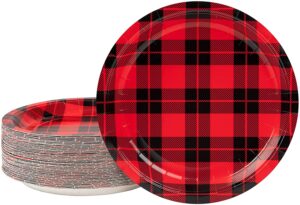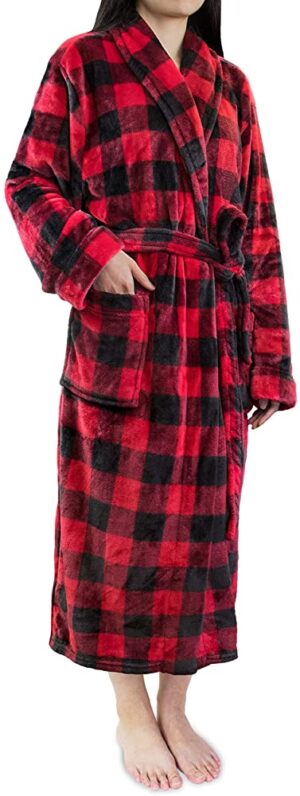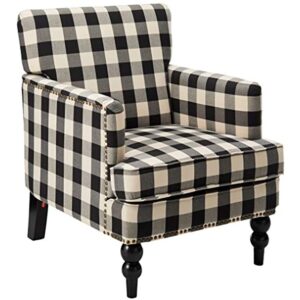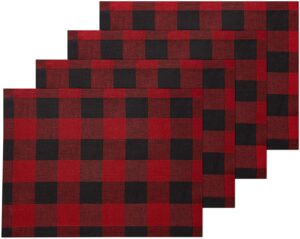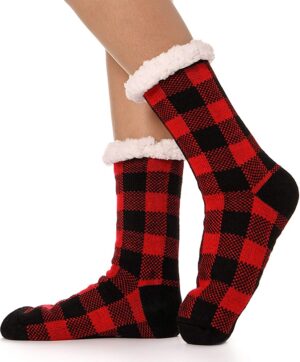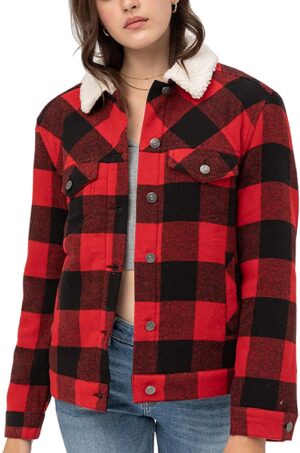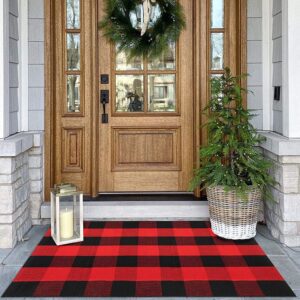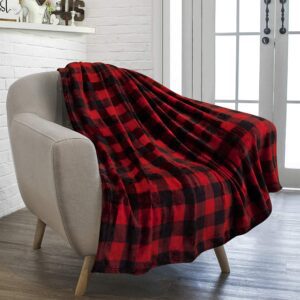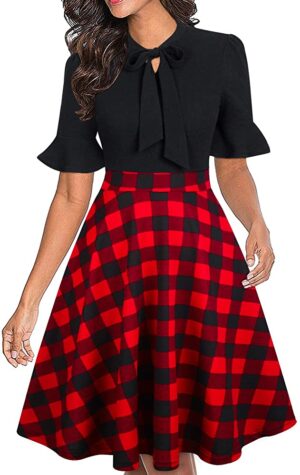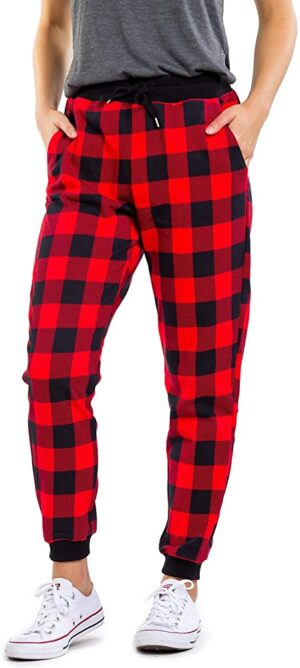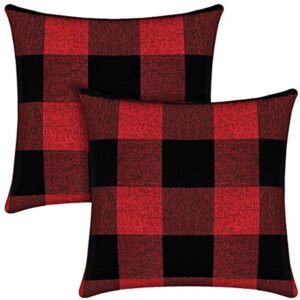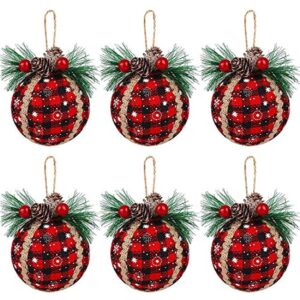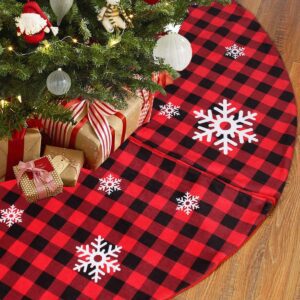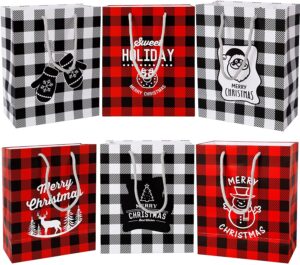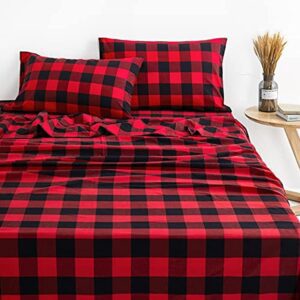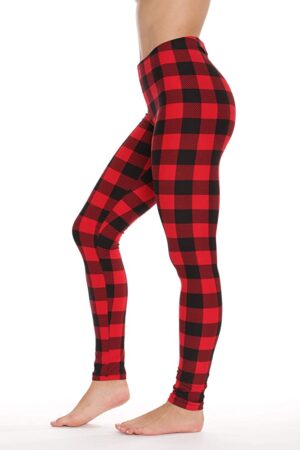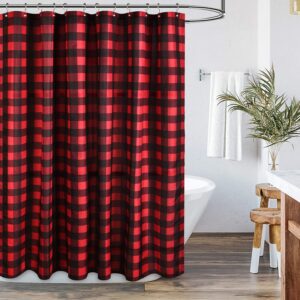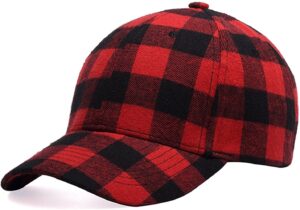Have you ever wanted to freshen up the look of your dining room chairs without the expense of buying new ones? Look no further! In this article, we will show you how to make a dining chair slipcover, a simple and affordable solution to give your chairs a brand new look. With just a few materials and a little bit of time, you can transform your dining room and add a touch of elegance and style. So, let’s get started and bring new life to your dining chairs!

Understanding the Importance of Dining Chair Slipcovers
Benefits of using dining chair slipcovers
Dining chair slipcovers offer a multitude of benefits that can transform the look and feel of your dining area. One of the key advantages of using slipcovers is the ability to protect your chairs from spills, stains, and general wear and tear. With slipcovers, you can easily remove and clean them, ensuring that your chairs always look fresh and inviting.
Another significant benefit of using dining chair slipcovers is the opportunity to change the appearance of your dining area without investing in new furniture. Slipcovers come in a wide range of colors, patterns, and fabrics, allowing you to effortlessly switch up the style of your chairs to match your mood or the occasion. Whether you prefer a classic, formal look or a more whimsical and casual feel, slipcovers give you the freedom to express your personal style.
Furthermore, dining chair slipcovers provide an additional layer of comfort. The soft fabric can make sitting for extended periods more enjoyable, and some slipcovers even offer extra padding for an enhanced seating experience. By combining practicality, versatility, and comfort, slipcovers can elevate your dining area in both functionality and aesthetics.
Importance of matching slipcovers with room decor
When considering dining chair slipcovers, it is essential to take into account the overall decor and style of your dining area. By choosing slipcovers that harmonize with the existing color scheme and design elements, you can create a cohesive and visually pleasing space.
Matching slipcovers with room decor enhances the overall aesthetic appeal of your dining area. It creates a unified look and adds a touch of sophistication. Additionally, coordinating colors and patterns can elevate the ambiance and create a more inviting atmosphere, making your guests feel comfortable and at ease.
By carefully selecting slipcovers that complement your room decor, you can effortlessly transform your dining area into a stylish and cohesive space that reflects your personal taste and design sensibilities.
Reasons for making your own slipcovers
While there are plenty of slipcovers available for purchase, making your own can be a rewarding and cost-effective option. By creating your own slipcovers, you have complete control over the fabric, color, and pattern, allowing you to customize them to your precise preferences.
Making your own slipcovers also allows you to experiment with different styles and designs, ensuring a perfect fit for your chairs. Custom slipcovers can be tailored to accommodate unique chair shapes and sizes, providing a seamless look that enhances the overall appearance of your dining area.
Furthermore, DIY slipcovers offer an opportunity to showcase your creativity and craftmanship. It can be a fulfilling endeavor that allows you to exercise your sewing skills and create something truly unique. By making your own slipcovers, you not only save money but also gain the satisfaction of having a one-of-a-kind piece that perfectly reflects your personal style.
Choosing the Right Material
Types of fabric suitable for slipcovers
When it comes to choosing the fabric for your dining chair slipcovers, durability and washability are key considerations. Fabrics such as cotton, linen, and synthetic blends are popular choices for slipcovers due to their durability and ease of maintenance. These materials are resistant to staining and can withstand regular washing without losing their shape or color.
Cotton is a versatile fabric that offers a wide range of designs and patterns. It is breathable, comfortable, and easy to clean, making it an ideal choice for slipcovers. Linen, on the other hand, exudes a sense of elegance and sophistication. It has a luxurious texture and drapes beautifully on dining chairs. Synthetic blends, such as polyester or nylon, offer the advantage of being highly durable and resistant to wrinkling, making them a practical and low-maintenance option.
Consider the level of formality and functionality you desire for your dining area when selecting the fabric. Additionally, consider factors such as pet-friendliness, as some fabrics are less likely to collect pet hair or snag easily.
Picking the right color and pattern
The color and pattern of your dining chair slipcovers can significantly impact the overall atmosphere and style of your dining area. When choosing the right color, consider the existing color palette in the room and opt for shades that complement or contrast harmoniously. Neutral tones like white, beige, or gray can create a timeless and sophisticated look, while vibrant colors can inject energy and personality into the space.
Patterns add visual interest and can help tie together different elements in the room. Whether you prefer classic stripes, floral motifs, or geometric designs, make sure the pattern complements the overall decor. Consider the size of the pattern in relation to the size of the chairs, as large prints may overwhelm smaller dining areas.
It is advisable to request fabric swatches before making a decision, as different lighting conditions can affect the perception of color. By selecting the right color and pattern for your slipcovers, you can create a visually pleasing and harmonious dining area that reflects your personal style.
Factors to consider: durability, washability, and comfort
In addition to fabric selection, several other factors contribute to the overall quality and functionality of dining chair slipcovers. Durability is essential, as dining chairs are subjected to frequent use, and the slipcovers should be able to withstand the rigors of everyday life. Look for fabrics that are resistant to tearing, fraying, and fading.
Washability is another crucial consideration. Slipcovers will inevitably encounter spills and stains, so it is important to choose fabrics that are easy to clean. Look for machine-washable fabrics or those that can be easily spot-cleaned. This will ensure that your slipcovers stay fresh and maintain their appearance for longer periods.
Comfort is also an important factor to consider, especially if you spend extended periods seated at your dining table. Choose fabrics that are breathable, soft to the touch, and offer a comfortable seating experience. Consider the thickness and texture of the fabric to ensure optimal comfort for you and your guests.
By carefully considering durability, washability, and comfort alongside fabric choice, you can select slipcovers that not only enhance the appearance of your dining area but also provide practicality and longevity.

Getting Accurate Measurements
How to measure the chair back
Accurate measurements are vital to ensure that your slipcovers fit perfectly on your dining chairs. To measure the chair back, start by placing a flexible measuring tape at the top of the chair back, where it meets the seat. Extend the tape measure all the way to the floor, following the contour of the chair’s backrest. This will give you the length measurement.
For the width measurement, place the measuring tape at one side of the chair back and extend it across to the opposite side, making sure to go over any curves or decorative elements. This measurement will give you the width of the chair back at its widest point.
Note down these measurements for each dining chair that you plan to cover.
How to measure the seat
To measure the seat, start by placing the measuring tape at the front edge of the seat and extend it towards the back of the chair. Take note of the length measurement.
For the width measurement, run the measuring tape across the widest point of the seat, ensuring it covers any arms or side supports. This will give you the width of the seat.
If your dining chairs have a cushion, measure the thickness of the cushion separately and note it down as well.
How to measure the chair legs
Measuring the chair legs is crucial to ensure that the slipcovers fit snugly and do not interfere with the chair’s stability. Measure the circumference of each chair leg, starting at the floor and wrapping the measuring tape around the thickest part of the leg.
Note down these measurements to ensure that the slipcovers are tailored to your specific chairs.
Tips for ensuring accurate measurements
When measuring your dining chairs, it is important to be as precise as possible to achieve an impeccable fit for your slipcovers. Here are some tips to help ensure accurate measurements:
-
Use a flexible measuring tape for accurate measurements that can easily conform to the curves and contours of your chairs.
-
Measure each chair individually, even if they appear visually similar. Slight variations in dimensions can affect the fit of the slipcovers.
-
Double-check your measurements to avoid any errors. It is always better to measure twice and cut once to prevent wasting fabric.
-
Take into account any decorative elements or armrests that may impact the dimensions of the slipcovers. Ensure that your measurements encompass these features.
By following these tips and taking accurate measurements, you can proceed to the next step with confidence, knowing that your slipcovers will fit flawlessly.
Creating a Pattern
Importance of creating a pattern
Creating a pattern for your dining chair slipcovers is an essential step that ensures a precise and tailored fit. The pattern serves as a template for cutting the fabric, allowing you to recreate the shape and size of each chair with accuracy.
A well-crafted pattern is especially crucial if you are making slipcovers for multiple chairs or if your chairs have unique shapes or dimensions. By creating a pattern, you can easily replicate the measurements and proportions for each slipcover, resulting in a cohesive and unified look.
Techniques for creating an accurate pattern
There are several techniques you can use to create an accurate pattern for your dining chair slipcovers. One common method involves using muslin or another lightweight fabric to create a mock-up or sample slipcover. By draping the fabric over the chair and pinning it in place, you can ensure that it conforms to the chair’s shape and size.
Another technique involves measuring and marking the fabric directly, using the measurements you obtained earlier. By carefully transferring the measurements onto the fabric, you can create a pattern that accurately represents the dimensions of your dining chairs.
You can also find online resources and tutorials that provide pre-made patterns for different chair styles. These patterns can be a helpful starting point, especially if you are new to slipcover making or if you need inspiration for your design.
How to adjust the pattern for a perfect fit
Once you have created a pattern based on your measurements, it is essential to test it on the chairs before proceeding with the cutting and sewing. Place the pattern on the chair and assess the fit. Pay attention to any areas that may be too loose or too tight.
To adjust the pattern for a perfect fit, use pins to create temporary alterations while the fabric is still in place. Pinch and fold areas that need to be taken in or let out until you achieve the desired fit. Make note of these adjustments on the pattern for reference when cutting the fabric.
By carefully adjusting the pattern before cutting, you can ensure that your slipcovers will fit your dining chairs like a glove.

Cutting Out the Slipcover Pieces
Tools required for cutting fabric
Before cutting the fabric for your slipcovers, it is important to gather the necessary tools to ensure precise and clean cuts. Some essential tools for cutting fabric include:
-
Fabric scissors: Invest in a pair of sharp, quality fabric scissors for clean and accurate cutting. Avoid using regular scissors, as they may result in jagged or uneven edges.
-
Rotary cutter and mat: A rotary cutter and self-healing cutting mat can provide extra precision, especially when cutting long, straight lines. Ensure that the rotary cutter blade is sharp for smooth cutting.
-
Measuring tools: A ruler or straight edge and a measuring tape are essential for accurately measuring and marking your fabric before cutting.
-
Pins or clips: Use pins or fabric clips to hold the pattern or fabric in place while cutting.
Ensure that your tools are clean and in good condition before starting the cutting process to achieve optimal results.
Step-by-step guide to cutting the fabric
Once you have gathered your tools and prepared your pattern, it is time to cut the fabric for your slipcovers. Follow these steps to ensure a smooth and successful cutting process:
-
Lay your fabric on a flat surface, ensuring it is free of wrinkles or creases. If necessary, iron the fabric beforehand to remove any wrinkles.
-
Place your pattern on the fabric, aligning it according to the layout or desired orientation of the fabric.
-
Use fabric weights or pins to hold the pattern securely in place. Make sure the pattern is flat and taut against the fabric.
-
Carefully cut around the pattern, following the marked lines. Use sharp, long, and continuous strokes for clean edges.
-
Take your time while cutting and avoid rushing to ensure accurate cuts. Double-check your measurements and markings as you go to prevent any errors.
-
When cutting multiple slipcover pieces, ensure that they are labeled or organized accordingly to avoid confusion during the sewing process.
Remember to cut with precision and care, as accurately cut fabric pieces will contribute to the overall quality and fit of your slipcovers.
Mistakes to avoid while cutting
While cutting the fabric for your slipcovers, it is important to be mindful of common mistakes that can compromise the final result. Avoid the following errors to ensure a successful cutting process:
-
Rushing: Take your time and work at a comfortable pace to ensure accurate and precise cutting. Rushing can lead to uneven edges, jagged cuts, or incorrect dimensions.
-
Cutting on uneven or unstable surfaces: Ensure that your cutting surface is flat, stable, and well-supported. This will prevent the fabric from shifting or stretching during the cutting process, ensuring clean and accurate cuts.
-
Neglecting to double-check measurements: Before cutting, double-check your measurements and markings to ensure accuracy. Mistakes in measurements can result in ill-fitting slipcovers.
-
Using dull scissors or blades: Make sure your cutting tools are sharp and in good condition. Dull scissors or blades can result in frayed edges or uneven cuts.
By avoiding these common mistakes and paying attention to detail during the cutting process, you can set yourself up for success in the next step: sewing the slipcover pieces together.
Sewing the Slipcover
Getting started with basic stitching
Before sewing the slipcover pieces together, it is essential to have a foundational understanding of basic stitching techniques. Whether you are using a sewing machine or sewing by hand, these stitching techniques will help ensure strong and secure seams.
One of the most common stitches used in slipcover making is the straight stitch. This stitch creates a neat and straight line and is suitable for joining fabric pieces together. To create a straight stitch, begin by securing the thread at the starting point. Insert the needle through the fabric, leaving a small tail of thread on the underside. Bring the needle back up through the fabric, creating a straight line. Repeat this process, keeping the stitches evenly spaced.
Another useful stitch is the backstitch, which ensures a sturdy seam that can withstand tension or stress. To backstitch, start by stitching forward a short distance. Then, reverse direction, aligning the needle with the previous stitch, and stitch backward over the same line. Repeat this process, alternating between forward and backward stitching.
By mastering these basic stitching techniques, you will be ready to sew the slipcover pieces together confidently.
Sewing the slipcover pieces together
To sew the slipcover pieces together, follow these steps:
-
Pin or clip the slipcover pieces together, right sides facing each other. Ensure that the edges are aligned and the pins or clips are inserted perpendicular to the seam line.
-
Begin sewing the pinned edges using a sewing machine or hand stitching. Use a straight stitch or a stitch appropriate for your chosen fabric and thread.
-
Sew with a 0.5-inch seam allowance, unless otherwise specified. This will allow for a comfortable fit without compromising the overall appearance of the slipcover.
-
Remove the pins or clips as you sew, being careful not to sew over them.
-
Secure the seams by backstitching at the beginning and end of each seam. This will prevent the stitches from unraveling over time.
-
If you are using a sewing machine, consider using a sewing machine foot suitable for slipcover making, such as a zipper foot or a walking foot. These specialized feet can help you navigate bulky or thick fabric, ensuring even stitches.
-
Continue sewing the slipcover pieces together, following the specific instructions or pattern design.
By following these steps and paying attention to the details, you can sew your slipcover pieces together with confidence, achieving professional-looking results.
Tips for clean and strong stitching
Achieving clean and strong stitching is essential for the overall quality and durability of your slipcovers. Here are some tips to help you sew clean and strong seams:
-
Choose the appropriate thread for your fabric. Use a durable, sturdy thread that complements the strength of the fabric. Cotton or polyester threads are commonly used for slipcover making.
-
Use the correct needle size and type for your fabric. Different fabrics require different needle sizes and types. Consult your sewing machine manual or needle packaging for guidance.
-
Practice sewing on scraps of fabric before sewing the slipcovers. This allows you to test the tension, stitch length, and stitch type to achieve the desired results.
-
Take your time and sew at a comfortable pace. Sewing slowly and steadily will facilitate accurate stitching and prevent any mistakes or unraveled seams.
-
Press the seams open or towards one side after sewing to create a clean and professional finish. A hot iron and a pressing cloth can help eliminate any wrinkles or creases.
By following these tips and maintaining attention to detail throughout the sewing process, you can ensure clean and strong stitching that will highlight your slipcover’s craftsmanship.

Fitting the Slipcover onto the Chair
Procedure to fit the slipcover
Fitting the slipcover onto the chair is an exciting and rewarding step that brings your project to life. Follow this procedure to achieve a seamless and snug fit:
-
Start by identifying the front and back of the slipcover. Most slipcovers are designed with labels or instructions indicating the correct orientation. If there are no labels, align the features of the slipcover, such as patterns or seams, to match the front and back of the chair.
-
Begin by draping the slipcover over the chair, fitting it as evenly as possible. Pay attention to the alignment of patterns, stripes, or any design elements to ensure a visually pleasing fit.
-
Smooth out any wrinkles, adjusting the slipcover as necessary until it conforms to the shape of the chair. Tuck excess fabric around the sides and back of the chair for a clean, tailored look.
-
Secure the slipcover in place using pins or clips. Place the pins or clips strategically along the seams or areas that require a snug fit. Ensure that they are inserted securely but not too tightly, as this may distort the shape of the slipcover.
-
Step back and assess the fit from various angles. Make any necessary adjustments, smoothing out wrinkles and ensuring that the slipcover appears symmetrical and proportional.
-
Once you are satisfied with the fit, carefully remove the slipcover from the chair, keeping the pins or clips in place.
By following this procedure, you can fit the slipcover onto your chair with precision, ensuring a visually pleasing and tailored appearance.
Ensuring snug and proper fit
To ensure a snug and proper fit, pay attention to the following details:
-
Take the time to adjust the slipcover properly, smoothing out any wrinkles or excess fabric. This will create a neat and tailored appearance.
-
Ensure that the slipcover covers the entire chair, including the back, seat, and legs. Check that the slipcover drapes evenly and does not hang loosely in any areas.
-
Pay attention to any decorative elements or chair designs that may require special attention during the fitting process. For example, if your chair has arms, ensure that the slipcover fits around them comfortably.
-
Make sure that the slipcover does not interfere with the chair’s stability or range of movement. Test the chair’s functionality while the slipcover is in place, making any necessary adjustments to ensure ease of use.
By taking these considerations into account, you can achieve a snug and proper fit for your dining chair slipcover, adding both style and functionality to your dining area.
Adjustments for better fitment
Even with precise measurements and careful fitting, some adjustments may be necessary to achieve the best fit for your slipcovers. Here are some common adjustments you may need to make:
-
Taking in or letting out seams: If the slipcover appears too loose or too tight in certain areas, you may need to adjust the seams accordingly. Pin or baste the areas that require alteration, removing the excess fabric or adding extra fabric where needed.
-
Padding or cushion adjustments: If your chairs have cushions, make sure they fit comfortably within the slipcover. Adjust the slipcover or cushion position to ensure a seamless appearance and a comfortable seating experience.
-
Straps or ties: If your slipcover has straps or ties, adjust their length or position as necessary to secure the slipcover in place. Ensure that the straps or ties are not too tight or too loose, allowing for easy removal and reattachment.
By making these adjustments, you can fine-tune the fit of your slipcovers, ensuring that they enhance the appearance and functionality of your dining chairs.
Caring for Your Slipcover
Cleaning recommendations
Proper care and cleaning of your slipcovers will help maintain their appearance and prolong their lifespan. Here are some cleaning recommendations to keep in mind:
-
Check the care instructions provided with your fabric. Different fabrics may have specific cleaning recommendations, such as machine-washing or dry cleaning.
-
If your slipcovers are machine-washable, follow the manufacturer’s instructions for temperature, cycle, and detergent usage. Use mild detergents and avoid using bleach or harsh chemicals that may damage the fabric.
-
Consider using a color-safe or fabric-friendly stain remover for spot cleaning. Gently blot the stained area with the stain remover, following the instructions provided. Test the stain remover on a small, inconspicuous area before applying it to the entire slipcover.
-
If your slipcovers are not machine-washable, opt for regular vacuuming or spot cleaning to remove dust, debris, and minor stains. Use a vacuum cleaner with a brush attachment to gently remove any loose dirt or pet hair.
-
For slipcovers that are not easily removable, you may need to consider using slipcover-specific cleaning products, such as foam or spray cleaners. Follow the instructions provided and ensure proper ventilation while using these products.
By following these cleaning recommendations, you can keep your slipcovers fresh and clean, preserving their appearance and extending their lifespan.
Tips for maintaining the color and fabric quality
In addition to regular cleaning, there are several tips you can practice to maintain the color and fabric quality of your slipcovers:
-
Avoid exposing your slipcovers to direct sunlight for extended periods. Over time, exposure to sunlight can cause fading and discoloration. Consider using curtains or blinds to protect your slipcovers from direct sunlight.
-
Be mindful of spills and stains, and promptly address them to prevent them from setting into the fabric. Blot stains gently with a clean, absorbent cloth, avoiding rubbing or scrubbing, which may spread the stain or damage the fabric fibers.
-
If your slipcovers are removable and machine-washable, consider rotating them periodically to distribute wear evenly. This will help prevent uneven fading or wearing of the fabric.
-
Consider using slipcover protectors or furniture covers when your dining area is not in use for extended periods. These covers will provide an additional layer of protection against dust, pet hair, and other elements that can accumulate on your slipcovers.
By incorporating these maintenance tips into your routine, you can ensure that your slipcovers remain vibrant and in excellent condition for years to come.
When and how to replace your slipcover
Although slipcovers are designed to be durable and long-lasting, there may come a time when replacing them becomes necessary. Here are some indicators that it may be time to replace your slipcovers:
-
Irreparable damage: If your slipcovers have significant tears, holes, or stains that cannot be rectified, it may be time to consider replacing them. Assess the overall condition of the slipcovers and evaluate whether the damage compromises their functionality or aesthetic appeal.
-
Unwanted changes in appearance: Over time, slipcovers may fade, lose their original color, or become worn. If these changes are significant and negatively impact the overall appearance of your dining area, it may be time to refresh your slipcovers.
-
Change in style or decor: If you decide to update your dining area’s style or decor, replacing the slipcovers can be an effective way to achieve the desired transformation. By selecting slipcovers that align with your new design vision, you can create a cohesive and stylish space.
When replacing your slipcovers, ensure that you select high-quality replacements that meet your functional and aesthetic requirements. Consider the same factors mentioned earlier, such as fabric type, durability, washability, and color compatibility with your room decor.
By understanding when and how to replace your slipcovers, you can continuously refresh and update your dining area to reflect your evolving style and taste.

Mistakes to Avoid
Common mistakes during measuring
Accurate measurements are crucial for slipcover making. Avoid these common mistakes during the measuring process:
-
Guestimating: Do not rely solely on approximations or visual estimations when measuring your dining chairs. Use a measuring tape and take precise measurements to ensure a proper fit.
-
Skipping measurements: Measure every dimension of your dining chairs, including the chair back, seat, and legs. Skipping certain measurements may result in ill-fitting slipcovers.
-
Neglecting to account for curves or decorative elements: Ensure that your measurements encompass any curves, armrests, or decorative elements of the chair. Ignoring these features may lead to slipcovers that do not fit correctly.
Avoidable errors during pattern making
Creating a pattern is a critical step in slipcover making. Avoid these errors during the pattern-making process:
-
Not creating a mock-up: Skipping the step of creating a mock-up or sample slipcover may lead to ill-fitting slipcovers. A mock-up allows you to identify any adjustments needed before cutting into your final fabric.
-
Failing to transfer accurate measurements: When transferring measurements to the pattern, double-check that the measurements are accurate. Failing to do so may result in mismatched slipcover pieces or incorrect dimensions.
-
Ignoring pattern adjustments: If the mock-up does not provide a perfect fit, make necessary adjustments to the pattern before cutting the fabric. Ignoring these adjustments may result in slipcovers that are too loose or too tight.
Fabric cutting and sewing missteps
Precise cutting and sewing are vital for successful slipcover making. Avoid these missteps during fabric cutting and sewing:
-
Rushing the cutting process: Take your time when cutting the fabric to ensure clean and accurate cuts. Rushing may result in uneven or jagged edges.
-
Not securing fabric pieces properly: When sewing slipcover pieces together, ensure that the pieces are pinned or clipped securely. Failure to do so may result in misaligned or distorted seams.
-
Skimming over sewing instructions: Read and follow the sewing instructions provided by the pattern or tutorial. Skimming over these instructions may lead to missed steps or improper techniques.
Improper fitting and remedial measures
Fitting the slipcover is a crucial step that determines the final appearance and functionality of your dining chair slipcovers. Avoid these fitting mistakes and take remedial measures when necessary:
-
Ignoring uneven wrinkles or creases: Smooth out any noticeable wrinkles or creases while fitting the slipcover. Ignoring these imperfections may result in a sloppy or ill-fitting appearance.
-
Neglecting adjustments: If the slipcover does not fit properly, make necessary adjustments such as taking in or letting out seams. Ignoring these adjustments may result in slipcovers that are too loose or too tight.
-
Overlooking the chair’s stability and functionality: Test the chair’s stability and functionality after fitting the slipcover. Ensure that the slipcover does not hinder the chair’s range of movement or stability. Make adjustments as necessary.
By avoiding these mistakes and taking corrective measures when needed, you can ensure a successful slipcover making process, resulting in beautifully fitted dining chair slipcovers.
Conclusion
In conclusion, the process of making dining chair slipcovers provides numerous benefits and opportunities for creativity. By utilizing slipcovers, you can protect your dining chairs, change the appearance of your dining area, and add an extra layer of comfort. When choosing the right material, consider factors such as durability, washability, and comfort. Accurate measurements, pattern creation, and precise fabric cutting are fundamental to achieving a perfect fit. Sewing the slipcover pieces together and fitting them onto the chairs require attention to detail and careful craftsmanship.
Caring for your slipcovers through proper cleaning and maintenance can help preserve their appearance and prolong their lifespan. While mistakes are avoidable, recognizing common pitfalls during measuring, pattern making, fabric cutting, sewing, and fitting is important to achieve optimal results. By avoiding these mistakes and taking corrective actions, you can create dining chair slipcovers that enhance your dining area’s style, comfort, and functionality. Embark on this DIY project to showcase your creativity, improve your home decor, and enjoy the satisfaction of a job well done.



